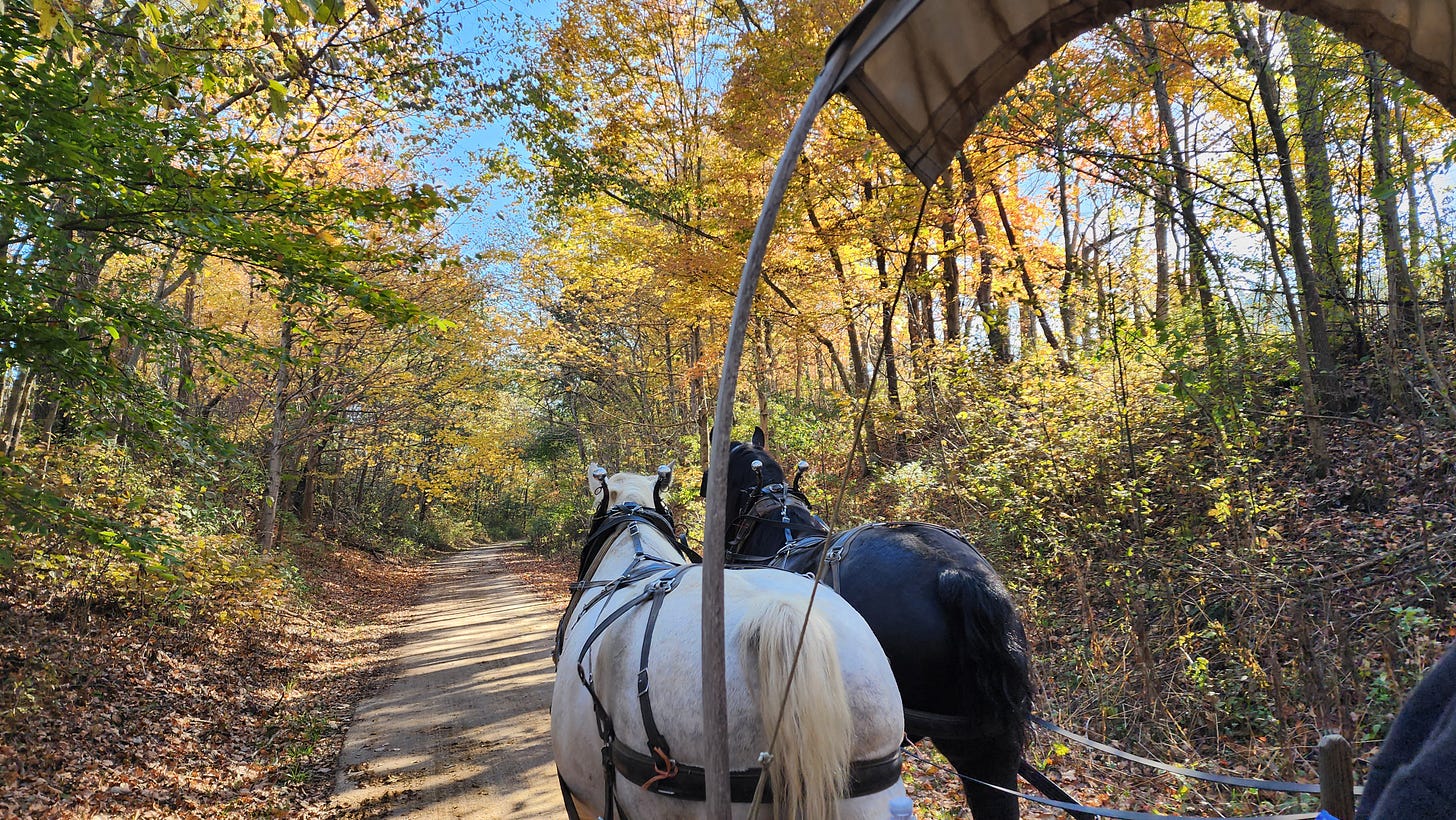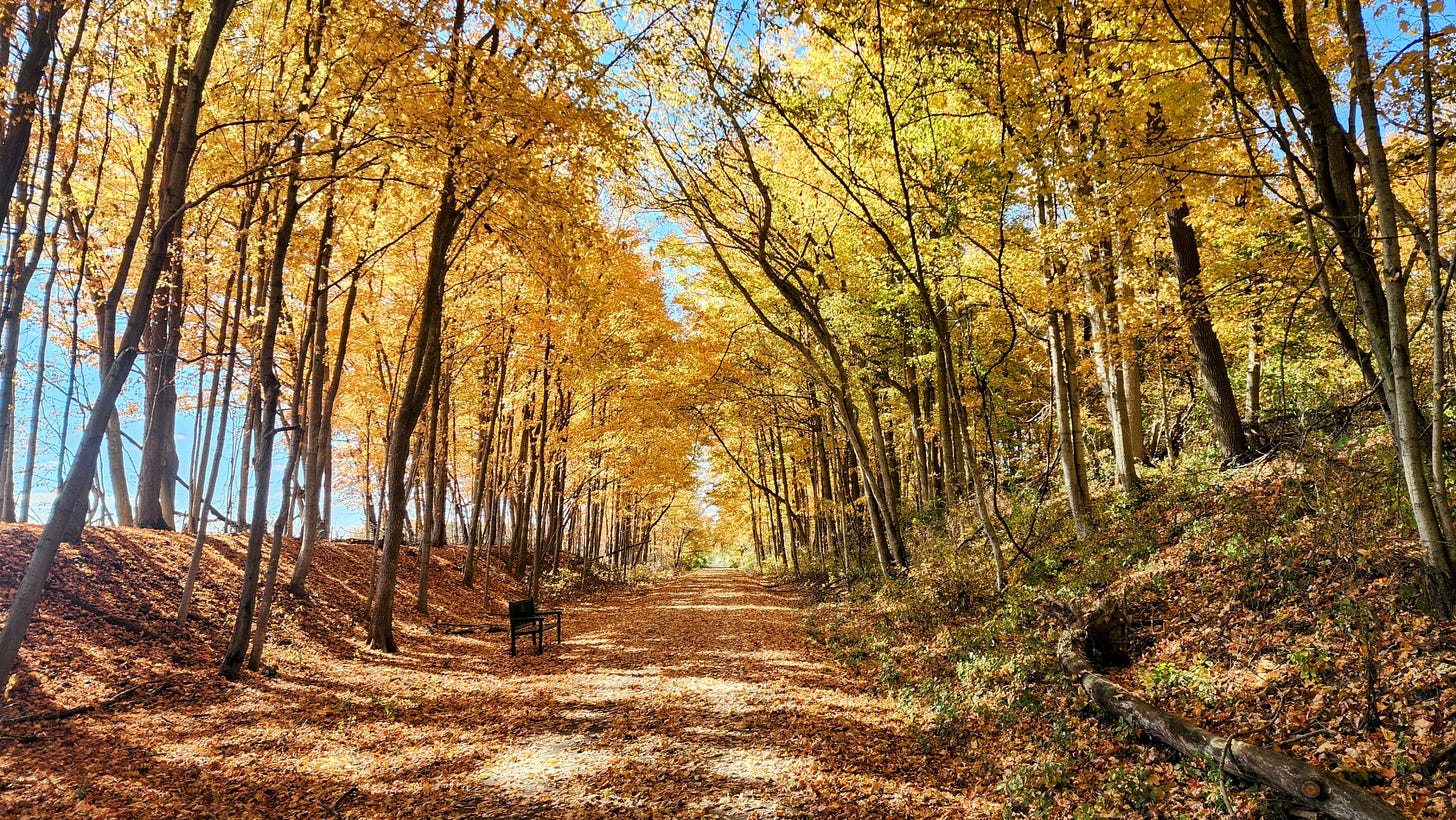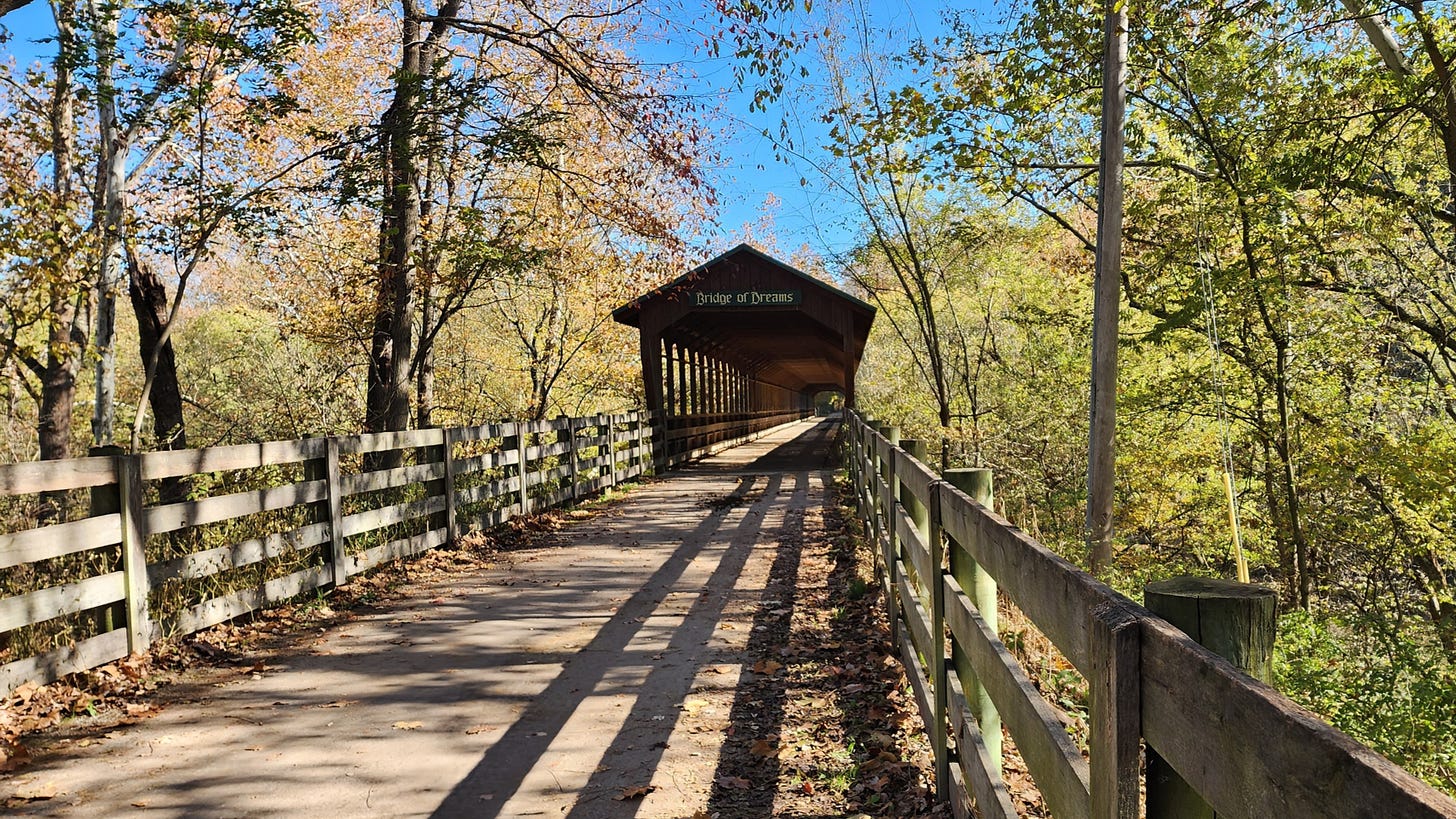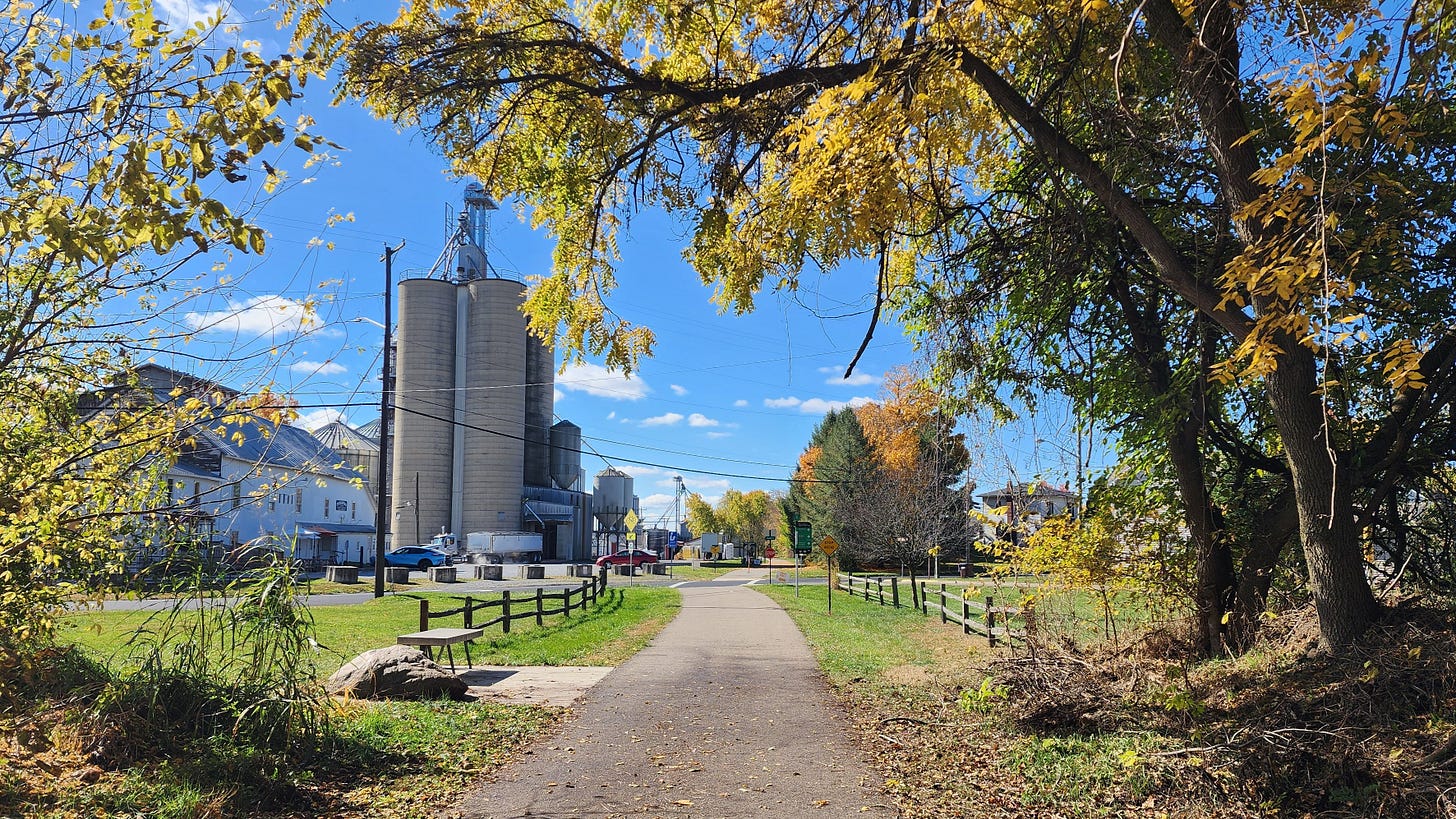It’s not just a bike trail
Sharing is respecting on a busy trail day
In recent weeks, I’ve explored the Ohio to Erie Trail in north-central Ohio. Living in Knox County, I’m lucky to have exceptional trails close to home. With peak fall color and ideal temperatures, it’s been the perfect time to hit the trails. Many others share this view.
As a fair-weather cyclist, I enjoy biking during the warmer months. When the temperature drops, I switch to walking with my dogs. Our family shows draft ponies at fairs and is part of a local draft horse club that recently organized a wagon train on the Mohican Valley and Holmes County Trails.
The wagon train and my recent trail experiences had me thinking about trail etiquette and how it affects interactions on shared paths. I've previously written about this topic on Tom on the Trails. My recent visits confirmed that most trail users are courteous and respectful.
Many people perceive multipurpose trails as primarily bike trails. These trails are popular with cyclists and have grown more popular since the pandemic. While cyclists are more visible, these trails are designed for shared use by cyclists and non-cyclists.
Trails have become a part of our daily lives, That is the main goal when transforming abandoned railways into green spaces. A visit to a local trail exemplifies that transformation firsthand. People are drawn to trails and the outdoors for different reasons.
My day on the wagon train perfectly illustrates this transformation. The trail was bustling with activity, offering something for everyone. People of all backgrounds and interests were drawn to the trail, united by their desire to enjoy the outdoors.
After a busy summer, the draft horse club gathered for a day of fun and camaraderie on the trail. Just as cyclists use bikes to enjoy the outdoors, horsemen use wagons and horses as their ride. Amish families were likewise enjoying the day in their horse-drawn buggies.
Cyclists, two-wheeled and three-wheeled, motorized and unmotorized, were making the most of autumn riding. Bike tourists laden with panniers on their cross-Ohio tour passed by. Mount Vernon Nazarene University students were returning home from an overnight bikepacking adventure in Amish Country.
Pedestrians, some walking with their dogs in strollers and bike baskets, were taking in the stunning fall foliage. Phones were out capturing memories on the trail. The Bridge of Dreams makes the perfect backdrop for photos with family and friends.
Encountering horses on the trail is an unusual experience for many. Amish communities in Knox County forbid bike use. That is a different story in Holmes County where e-bikes are a more common sight than horse-drawn buggies.
Our draft club prioritizes trail courtesy, stopping or moving aside to let others pass. I was out front on foot at times alerting trail users to the approaching wagon train and inviting them to proceed cautiously. Having participated in parades and events, these horses are comfortable around pedestrians and bikes.
A common question is who has right-of-way on trails: horses or cyclists? Generally, the principle of "wheels yield to heels" applies, meaning pedestrians have priority over wheeled vehicles. This includes wagons, carts, bikes, and trikes. When in doubt, follow this simple rule.
After the wagon train, I encountered people enjoying the outdoors on trails. Many, drawn to Ohio's autumn color show, were on leisurely walks or bike rides. Families, often accompanied by their dogs, were creating lasting memories.
This reinforces why these aren't just bike trails but shared trails. I prefer shared-use trails over multipurpose trails. Sharing responsibly is key to a memorable, enjoyable, and safe trail experience.
I've shifted much of my focus on trails to the human experience on the trails. While the growth of outdoor recreation and its economic and tourism benefits are important, unforgettable experiences drive people to advocate for and return to trails.
Nothing ruins a trail experience more than conflict. It's crucial to respect all trail users, whether hiking, biking, horseback riding, or enjoying the trail in their own way. Sharing the trail is a sign of respect.






